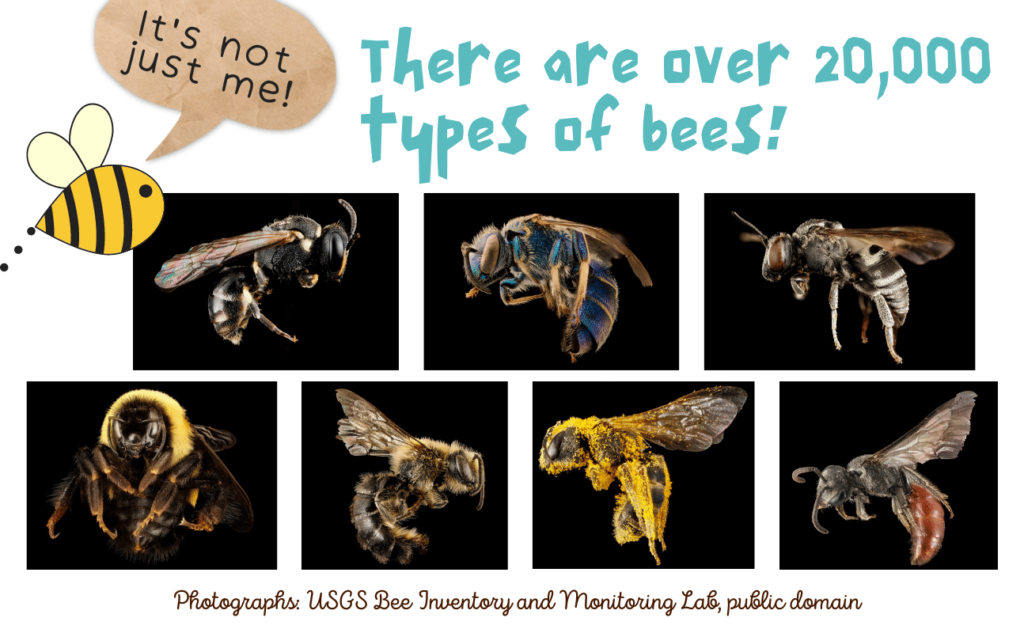
Question: Are wasps and hornets types of bees?

Answered by Jess Mullins
Melittologist Jess Mullins is a PhD student at the University of California San Diego
How are wasps, hornets, and bees related?
Bees are admired. Wasps and hornets are unwelcome guests at our picnics. But did you know they are closely related?
Bees are actually vegetarian wasps – bees eat pollen and nectar from flowers. Wasps and hornets (hornets are a group of large wasps) eat other insects and spiders!

How can you tell wasps and bees apart?
You can tell the difference between wasps and bees by watching their behavior and by looking closely at their bodies.
1. Wasps visit flowers quickly, bees take their time!
Wasps get their protein from the insects and spiders they eat. You may see wasps making quick visits to flowers. Wasps only visit flowers to sip sugary sweet nectar. But bees will usually spend more time on the flower because this is where they collect their protein source, pollen!

This said, only female bees collect pollen to build their nests. Male bees ate plenty of pollen when they were larvae. As adults the male bees only visit flowers to find a mate or to sip nectar.
2. Wasps look less hairy than bees
You might recognize a wasp by its bright (usually yellow) color! They may look hairless. Wasps do have hair, but the hairs are thinner and harder for us to see. Bees usually have more hair, which helps them gather lots of pollen to take back to their nest cells. Even though male bees do not collect pollen, they are still hairy.

3. Wasps have smooth hairs and bees have split ends!
Humans sometimes get split ends at the tips of their hairs. You can only see a bee’s split ends under the microscope, but this is the real trait that separates them from wasps. If you zoom in really closely, you can see that bees have branched hairs – pollen sticks to these branched hairs so bees can collect lots of pollen! Wasps have hair, but it is never branched like a bee’s hair.
Look at this photograph of honey bee hairs taken through a microscope. Can you see how the bee hairs are branched (not smooth)? The spiky balls are pollen that has been trapped by the bee’s hairs.

Micrograph of the hairs of a honey bee. Image courtesy of Megan Asche, macronature.com
You may also like these stories

We need bees. How can you help?

Are any bee species endangered?

Dive deeper with this article from Mongabay India: No honey, no hives, but solitary bees have important lives
Bee resources
Virtual bee exhibit from Museum of the Earth: Bees: diversity, evolution, conservation
Excellent resource on bee biology from Museum of the Earth : Bee-Ology
Macro photographs from the USGS Bee Inventory and Monitoring Lab:
Comprehensive resource on honey bees from ASU Ask a Biologist: Bee Bonanza
Bee activity book about bees of Oregon and how they help make food, from foodhero.org, OSU, and other partners
Graphics and layout by Mongabay Kids
*Mongabay Kids is not responsible for content published on external sites.







